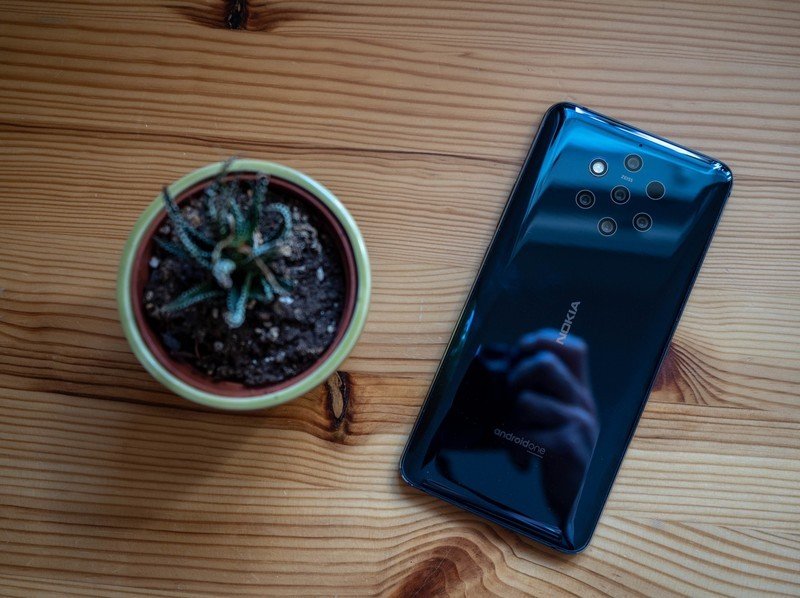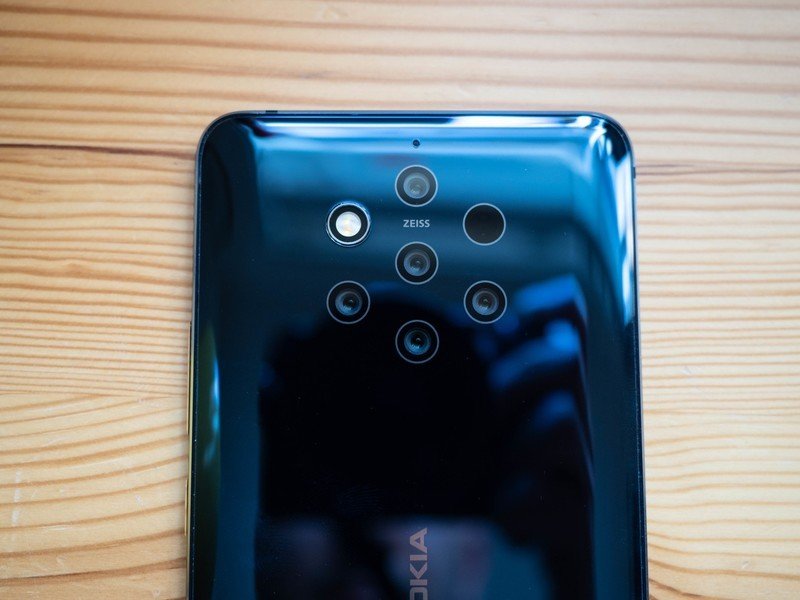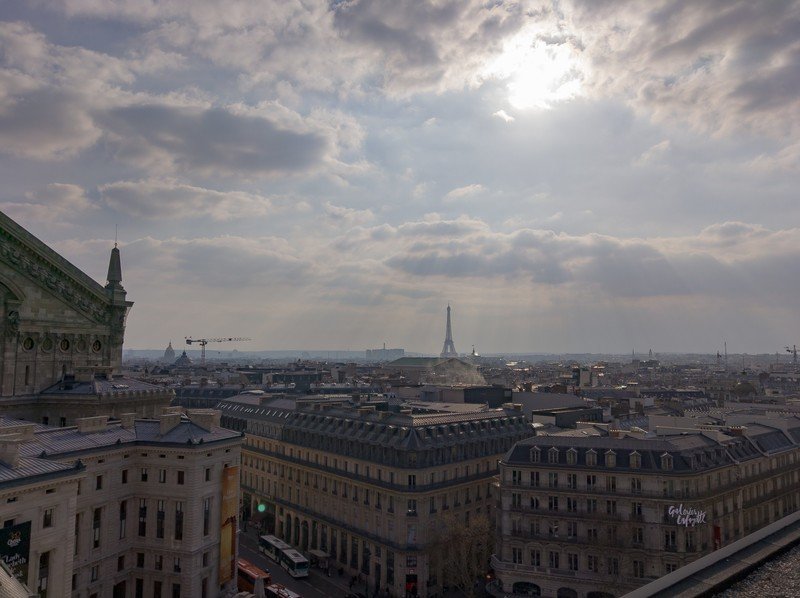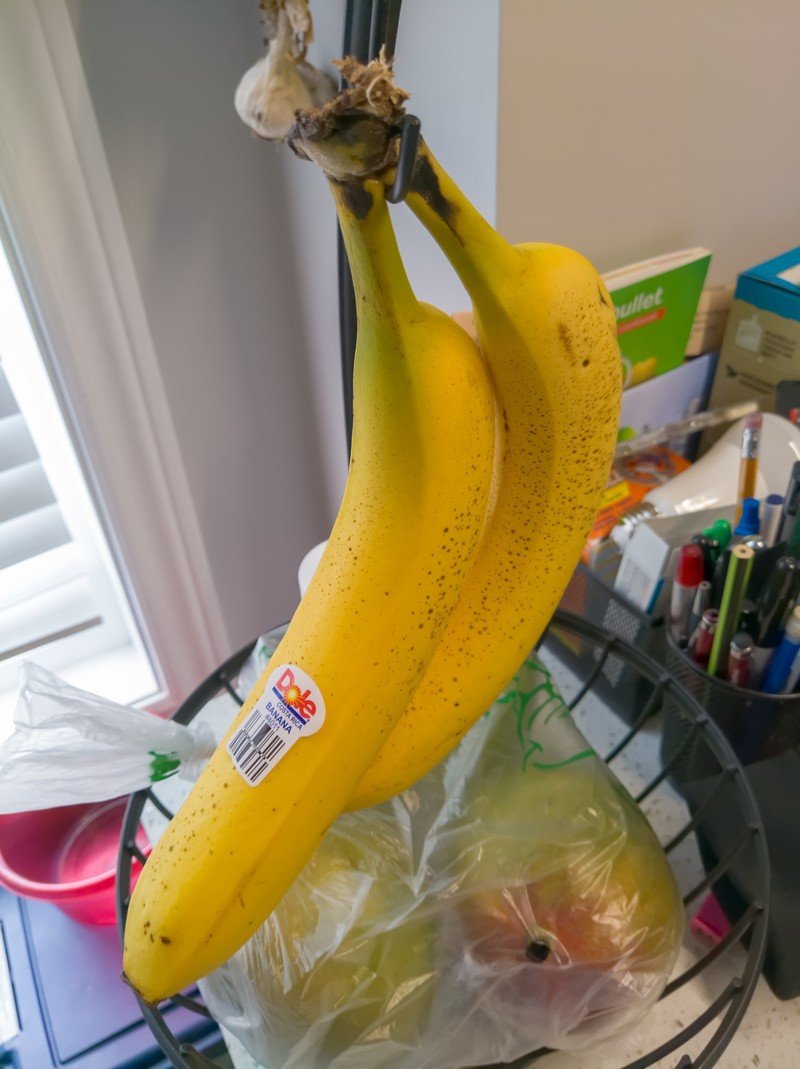I don't like not liking something. It's not a feeling I relish; I prefer to find the good in things, as I do people.
Which is why it's taken me so long to write this review. The Nokia 9 is not worth buying, despite possessing some redeeming qualities. It's one of the most frustrating products that I've used in recent memory because of its baggage, the brand it attempts and fails to redeem, and the technology that has so much potential and such flawed execution.
The Good
- Beautiful, symmetrical design
- Camera is extremely powerful
- Software is clean and fast
- Excellent haptics
The Bad
- The fingerprint sensor is awful
- JPEG output is underwhelming
- Some software bugginess
- Last year's SoC
- Tinny speaker
About this review
I've been using an international version of the Nokia 9 since early March 2019. It has received one software update, from 00WW_4_17C to 00WW_4_19A, which improved software stability a bit but did not address camera output or the fingerprint sensor. It did add face unlock, though, which was appreciated. All photos shown in this review were taken with the latest software update.
Nokia 9 PureView The Phone Itself

| Category | Features |
|---|---|
| Operating System | Android 9 Pie |
| Display | 5.99-inch 18:9 pOLED QHD+ Gorilla Glass 5 |
| Chipset | Qualcomm Snapdragon 845 |
| RAM | 6GB |
| Storage | 128GB |
| Battery | 3320mAh |
| Charging | USB-C 18W wired charging Wireless charging 10W |
| Water resistance | IP67 water and dust resistant |
| Rear Cameras | Two 12MP RGB f/1.8 1.25μm Three 12MP monochrome f/1.8 1.25μm |
| Front Camera | 20MP 1μm |
| Security | In-display fingerprint sensor (optical) |
| Dimensions | 155 x 75 x 8mm |
| Colors | Midnight Blue |
| Price | $699 |
The story of the Nokia 9 must be told in two parts: the one about the phone itself and the other about the camera.
The phone is beautiful, with shiny metal sides and a curved glass back that, despite its trypophobic properties, maintains its symmetry all the way through. I've used it for weeks now, and I'm still deeply taken with the arresting design and unconventional layout. Its buttons are clicky and satisfying, and despite its slippery back, it's a joy to use and hold. When I use it I feel like I'm holding something substantial, bordering on jewelry.
Get the latest news from Android Central, your trusted companion in the world of Android
The 6-inch AMOLED display, notchless, is similarly arresting. While it doesn't get as bright as I'd like, I'm a huge fan of its vivid colors and excellent touch response.
Unfortunately, the screen is also home to the worst in-display fingerprint sensor I've ever used. This thing is an abomination, something that should have been passed over ten times before being thrown in the product planning dustbin. Not only is it unreliable, but it's poorly placed a third up the display. It almost never works the first time, and it requires pressing far too hard to activate even when it's in a good mood.
I'd imagine that, physically, it's the same component found in the OnePlus 6T and Huawei Mate 20 Pro, but for some reason, Nokia just couldn't maneuver its way through the technical hurdles required to optimize it. So while I've never been entirely happy with the reliability of these first-gen in-display fingerprint sensors, I hold out hope that with a few software updates it can graduate from unusable to passable. After using the more modern in-display fingerprint sensor in the Huawei P30, I'm hopeful the issues won't last more than a generation, but man is this a frustrating experience.

The frustration is somewhat mitigated by the addition of face unlock in a recent update, but it's neither particularly fast (especially compared to devices like the Galaxy S10 or OnePlus 6T), nor is it secure.
The Nokia 9's bottom reveals a USB-C port and single downward-firing speaker, another disappointing element to this phone. While it gets loud, it's thin and tinny, with awful equalization. Everything sounds like it's been compressed to the, um, nines, which makes watching videos or even listening to podcasts considerably less enjoyable than on other devices. That there's no headphone jack is a bummer, too, but thankfully the company bundles a pair of decent headphones, and a USB-C dongle, in the box.
There's a lot to like about the Nokia 9's hardware, but the in-display fingerprint sensor all but ruins the experience.
You're hearing a lot of negatives, so how 'bout some upsides? The haptic motor in here is on point — definitely up there with the Pixel 3 and LG V40 as one of the punchiest and most satisfying to use. Not quite iPhone good, but which Android device is? Also call quality is great from the earpiece, and battery life is great — all day, and then some — with the modestly-sized 3320mAh battery. There's also Qi-based wireless charging if you're so inclined, but the back is so slick I'd recommend avoiding a flat charging pad unless the phone is safely ensconced in a case.
That the phone runs 2018's Snapdragon 845 SoC doesn't matter — with two major exceptions, which I'll get to shortly — because overall performance is relatively smooth, and there's 6GB of RAM and 128GB of storage inside to back it all up.
Why put a 2018 processor in a 2019 phone? Because Nokia worked with Light, the makers of the crazy 16-lens camera/smartphone/thing, along with Qualcomm, which controls the image signal conduit for the photos themselves, to ensure that five-camera setup works as well as possible. But like the phone's Android One-based software, the camera is a mixed bag.
Nokia's decision to use Android One as its software base is a long-term win, even if the actual implementation isn't completely free of bugs.
Before we get to the main event, let's talk about that software for a minute. Ostensibly this is the same Android 9 Pie experience you'd find on a Pixel, right down to the launcher. While Nokia inserts itself where necessary — the camera app, for instance, is all Nokia — this is clean and beautiful. Except for the instability part (which, to be honest, it also shares with the Pixel 3).
On the latest software build, apps crashed with regularity, especially the camera, and the OS would occasionally lock up entirely, usually when processing photos in the background. Given that this is a photo-oriented product, that the device spends so long crunching each photo behind the scenes is its sad fate, but it's one that you must contend with when there's so much potential buried within.
Nokia 9 PureView The Cameras
It's difficult not to feel a tinge of excitement when you read the hyperbolic marketing claims on Nokia's website:
Working in perfect unison, the five 12 MP cameras collect up to 10 times more light than a single smartphone camera color1 sensor. The results: photos with superb dynamic range that capture detail and texture from both the highlights and shadows, plus incredible depth-of-field and vibrant, truest-to-life color.
Like, who doesn't want that? Better photos in every situation, coupled with more data through advanced computational photography. With every instantly-sharable JPG, you get a tweakable, data-rich (and megabyte-heavy) RAW file saved as a DNG, which can be edited in Lightroom CC on your phone or desktop. It's a tantalizing proposition.
But, like all meteoric claims, this one was too good to be true. It took me a while to write this review because I wanted to spend more time with the Nokia 9's camera, to figure out its quirks and distill my thoughts into whether such power — and let me be clear, there's plenty of potential here — yields superlative results.

Let's break it down a bit: every photo taken on the Nokia 9 uses all five cameras — that's three monochrome sensors and two color ones, all using the same basic hardware and f/1.8 lens — to capture as much light data and detail as possible. While you only get a preview of a single sensor in the viewfinder, after an agonizing processing delay, the final photo is a product of the raw light and color mixed with a complex set of software instructions that have navigated through Qualcomm's image signal processor. The idea is that in any situation you get a photo that's both true to life and ready to be improved upon.
Of course, JPEGs are highly compressed, and each phone vendor applies its own set of rules based on a variety of factors. Fans of mirrorless and SLR cameras, for example, often claim that Fujifilm's JPEG processing is unmatched in the industry, preserving as much of the raw photo's original detail and texture while amplifying (but not exaggerating) the colors.
After spending weeks taking photos with the Nokia 9, the two words I would use to describe JPEGs taken with the phone are "oversharpened" and "flat". Nearly every photo looks like it was sucked into Adobe Lightroom with the Clarity toggle ramped to 100 and the saturation reduced to 50. If I were an editor, most of the JPEGs would go straight into the trash, unedited. Such is the nature of a compressed image that begins its life so far from usable.

Occasionally, though, the phone would spit out JPEGs that surprised me, with beautiful, natural color and outstanding bokeh. In the right conditions, the Nokia 9 lives up to its PureView name, and in those instances, I wanted to continue using it. But those moments were few and far between.
Thankfully, the phone's camera output is somewhat redeemed by its RAW photos. Yes, most phones are able to capture lossless photos in some format, but few of them contain the sheer amount of usable data as the Nokia 9. That's how I came to redeem some of the unusable JPEGs — by importing the DNGs into Lightroom Mobile and exporting them JPEGs that I would actually want to share.
The problem is that I don't want to have to do that with every photo; on the other hand, I was so impressed with the RAW files' versatility that I just might have to integrate the procedure into my daily workflow. If you don't believe me, take a look at some of the comparison shots below; on the left is the original JPEG; on the right is the DNG lightly edited in Lightroom Mobile and exported as a JPEG. The difference is significant.
Original unedited JPEG (left) | Lightly edited JPEG generated from RAW files (right)
Along with all that exceptional detail, the Nokia 9 creates a depth map with up to 1200 points of differentiation in a single photo. Each one can be refocused after the fact by using Google Photos' native tools, and the process is pretty easy and fun. It's neat getting really granular about focus, and trying to eke different interpretations of the same photo, but the reality is that I think, outside of a few niche cases, this isn't going to be a widely-used feature.
I'd have much preferred Nokia to focus its attention on getting the portrait, or Bokeh mode, up to snuff, but like the JPEGs themselves, the results were hit or miss. While most cameras, including the Pixel 3, have difficulty properly separating a foreground subject from the background, especially around fine detail like hair, the Nokia 9 just failed outright most of the time, resulting in portrait photos that were underwhelming. I made sure took the same shot several times to ensure it wasn't just an aberration — but no, it's just a badly-implemented feature.

Further harping on the camera, low light capture on this thing isn't great, either. Given its pedigree, and the number of megapixels it cumulatively uses to pick up extra light, the Nokia 9 should perform incredibly in the dark. It didn't do terribly, per se, but there's no explicit night mode, and every time I wanted to get the results I would easily obtain from the Pixel 3's Night Mode, I'd have to manually lower the shutter speed to 1/4 and increase the ISO to 6400. It didn't help.
Finally, because each photo is processed and finetuned after each capture, it takes between 10 seconds and a minute for each one to appear in the gallery, an absurdly long time for anyone to wait. This isn't a phone where you can reasonably expect to shoot and share like you would on, say, a Galaxy S10; it forces you to slow down, plan your shot, and consider each one after the fact. There's a staid, organic elegance to that kind of workflow, especially since if you're taking RAW photos, the results can be incredible, but it definitely doesn't feel modern. You may find that refreshing; I just wish the photos were better straight out of the camera.
As much as the Nokia 9 gets wrong, though, it also gets a lot right. While the camera app isn't very stable, it's full of useful features, toggles, and modes to help you tweak your way to photography bliss. And while I wish the phone itself had a dedicated shutter button, à la the Lumia 1020 or PureView 808, the software more than makes up for it.
Should you buy the Nokia 9 PureView?

Nokia says that it's working on a major software update to fix a bunch of the problems with this phone. In fact, that's been the message for the entire month I've used the phone. I decided to stop waiting because, by the time the update is released, any interest in the phone would have long passed.
During its open weekend blitz, the Nokia 9 PureView dropped to $599 as a promotion, but its regular price is $699 — still lower than most flagships today, but higher than, say, the OnePlus 6T, which arguably produces better photos with much, much less overhead. To justify the purchase, you have to know what you're getting yourself into; this isn't a phone for casual photographers. It's for someone who wants to tweak, to eke out something profound from raw data, to curate a collection instead of merely sharing a photo. But that person isn't me.
I like a lot about the Nokia 9, and want to like its ambitious, tenacious camera — but I can't recommend it to most people. Not until the company pulls off a software miracle.
3 out of 5
There's a good phone and a great camera in here somewhere. My feeling, though, is that we'll finally see that full potential play out in the inevitable Nokia 9 sequel.

Daniel Bader was a former Android Central Editor-in-Chief and Executive Editor for iMore and Windows Central.

















